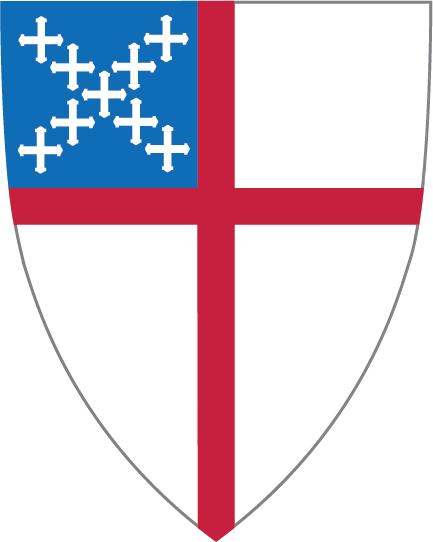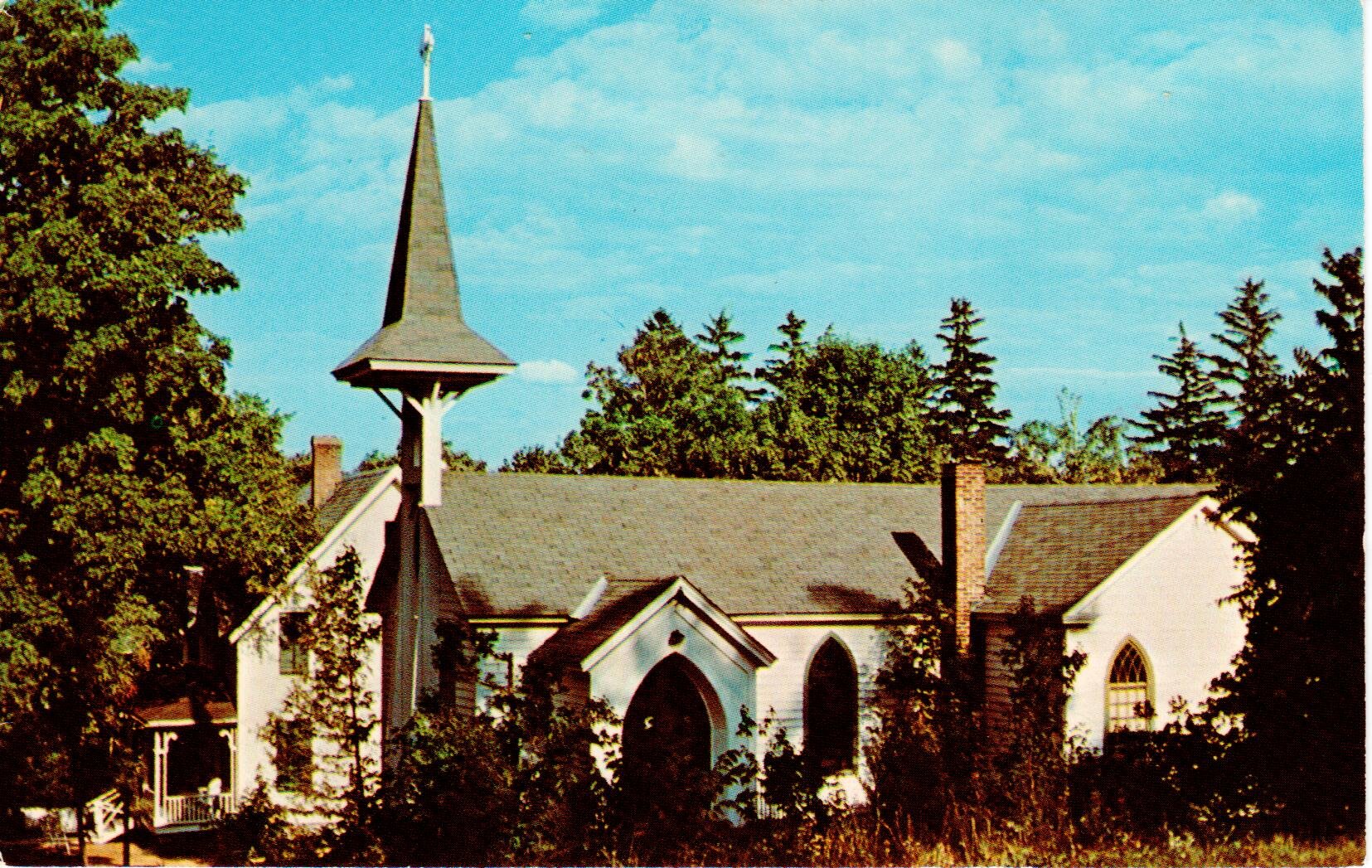THE LEGACY OF ST. JOHN’S
A Work in Progress
Darcey Hale, St. John’s Church Historian
We are currently in the midst of transcribing all of the church records and within the next year we should have a more complete and fully documented history of St. John’s. In the meantime, here is what we have been able to piece together about the early and formative years of the church during the 19th century. This has been an exciting and fascinating journey. - DH
Soon after Essex was split off from Willsborough in 1805, Henry Boynham, a deacon from the West Indies, held the first documented Episcopal services in the village. We have no further information until 1835 when Judge Henry H. Ross built a small clapboard schoolhouse for his children and those of his friends. He intentionally designed and built it to be converted into an Episcopal church when the village had a school of its own.
We have no further documentation until January 1, 1844 when Rev. Edgar P. Wadhams of Ticonderoga, and his assistant Rev. Palmer Dyer of Whitehall, baptized Frances Jane, the infant daughter of Judge Henry H. and Susannah Ross. The baptism took place at their beautiful home, Hickory Hill, which still stands majestically on the hill above the church. The next day five more baptisms took place.
By 1849, Essex was a booming hamlet of 2,000 residents with several active shipyards producing steamboats as well as sailing canal boats. It was an important and active port of call for shipping goods to and from Canada to the north, Albany and New York City to the south, and Buffalo to the west by means of the various canal systems. The growing number of Episcopalians in the village were served by Rev. Fernando Cortes Putnam, a missionary priest to Keeseville and Essex who traveled over Willsborough Mountain by stage coach and held services in the Ross schoolhouse on alternate Sundays.
On March 21, 1853, at a meeting in the basement of the Essex Baptist Meetinghouse, a group of male Episcopalians of age gathered for the purpose of organizing a parish, incorporating themselves and choosing Wardens & eight Vestrymen. On April 23, 1853 the Rt. Rev. Jonathan M. Wainwright, Provisional Bishop of the Diocese of New York, formally approved the incorporation of St. John’s Episcopal Church. Its newly-formed Vestry engaged Rev. F.C. Putnam as their first priest and they paid him the munificent sum of forty-three dollars a quarter as salary as well as to cover the incidental expenses incurred by the church. They also engaged Rev. Cooper to act as a missionary whose job was to carry the Anglican faith into the hinterlands and raised sufficient funds to establish a chapel in the burgeoning, nearby hamlet of Boquet. A year later when Essex had built a brick schoolhouse just down the road the Vestry formally leased the former Ross schoolhouse for use as a church and Judge Ross generously loaned them sufficient funds to purchase an organ.
There are no further entries in the vestry book until 1860 and they are sparse throughout this decade as rectors came and went with alarming rapidity, and when they were without a cleric the vestry simply conducted Morning Prayer. That year there is mention of a chapel in nearby Whallonsburgh that appears to have been established by J.S. Whallon but there is no record of its existence after his death in 1864. On Dec. 2, 1868 the Diocese of New York was split and the Diocese of Albany was created to the north with Bishop Duane as its leader. St. John’s was no longer part of the Diocese of New York. Also, that year a committee was formed to take up the contract for a rectory and procure a deed as a means of enticing a more permanent rector to come to Essex. To date there is no record of where this was located. It appears that the church took on more than it could handle. Owing to the indebtedness of the church it was necessary to reduce the expenses of the Parish as much as possible and members of the vestry each took a month to act as Sexton. The Vestry assumed liability for the debt that came from owning a rectory and in 1871 the Wardens requested permission to sell the brick building and the land thereon which was “known as the rectory belonging to St. John’s Church, Essex” to a Mr. Hoskins for a total of $1,500.
The congregation of St. John’s continued to expand and in 1878, under the leadership of Rev. Eugene L. Toy, the church was able to outright purchase the church building from Judge Ross as well as the lot above it. Despite the deteriorated condition of the church building, and after much deliberation, the Vestry ultimately decided not to demolish it and to undertake a serious restoration of the 1835 Ross schoolhouse instead. The Vestry continued to believe that providing a place for clergy to live was necessary if they wanted to break the cycle of rapid turnover of rectors and they decided to move the church onto the new upper lot at the corner of Elm and Church Streets and build a rectory where it had stood formerly.
Gothic Revival architecture was at its height and design elements of this style were used in both the church and the rectory. In the church these are evident in the pointed windows and doorways, the addition of a bell tower to house a former ship’s bell and neo-structural buttresses along the east side. The spacious new rectory’s façade with front facing gables, verge boards beneath its steeply pitched roof, hood molds over the windows and turned porch posts with brackets are all in keeping with the Gothic Revival style.
Over time improvements to the interior of the church were made. They extended the building to the south in order to accommodate a centerpiece for the Eucharist and erected a black marble (dark limestone) altar with beautiful incisions of multicolored patterns which was designed and paid for by John Henry Hopkins, Jr., a former priest. Over time beautiful Tiffany style-stained glass windows were added on either side of the altar and stained-glass memorials were inserted in the window lancets A handsome oak communion rail was installed in order to separate the priest from those receiving the Eucharist. Plaques and other memorial fixtures were installed on the walls of the church over time and handsome furniture and furnishings were added.
On June 29, 1881, The Rt. Rev. William Croswell Doane, first bishop of the recently formed Diocese of Albany, confirmed five persons and consecrated St. John’s Church which had 90 communicants by this time. In order to meet the needs of the growing Episcopalian population in Elizabethtown St. John’s built the Church of the Good Shepherd in Elizabethtown, the county seat, in 1882. The two churches were yoked and they shared a priest, but each had its own Vestry. This arrangement remained in place for over a century. However, sadly, things were about to change in the village. For almost a century Essex had held a premier position as an important port on Lake Champlain where ships and shipping were an essential ingredient. Then in 1875 the long-awaited railroad was finally completed and passengers and goods could easily move from New York City, to Albany and then north through the Adirondacks to Montreal. Trains could deliver both to their destinations more quickly, efficiently and cheaply, worse yet, the train did not even run through the village. Essex was isolated from the center of activity for the first time.
However, despite this turn of events, during the tenure of Rev. William Irish (1884 -1895) St. John’s continued to be the place for the significant number of Episcopalians in Essex and the surrounding communities. New carpets and pews were added, along with a carriage block and when electricity came to Essex the kerosene lamps were replaced with Gothic style lanterns. While Essex continued to slump into a decline and its population dropped the Episcopal population in the area remained large and active. Rev. Hobart Bingham Whitney (1897 – 1912), designed and built the chapel of St. Mary in Willsboro and the mountain chapel of All Souls in St. Hubert’s while he continued to lead worship services in both Essex and Elizabethtown. He was a busy man indeed!
At about the same time, John Bird Burnham, a noted conservationist and entrepreneur, developed the Crater Club just south of Essex - a summer colony which became popular with many Episcopalians, including clergy. As with the Ross family before them, the Burnham family contributed immeasurably to the ongoing life of St. John’s Church. The church and its chapels were served by seasonal rectors, usually from May through September, with supply clergy or lay readers holding less frequent services in other months. Many of these occupied the St. John’s rectory during that time.
During the tenure of Rev. A. William Cooper, Jr. (1982-1994), who had an assistant rector, the rectory was lived in year-around for the first time in many years. St. John’s initiated a campaign to provide an investment fund for the parish and to expand its ministry by adding a parish hall which was dedicated to the Rt. Rev. Charles B. Persell, Jr., Suffragan Bishop of Albany, in 1984. In 1987, a garden and columbarium area were created behind the hall and it was dedicated to the memory of the Rt. Rev. Robert B. Hall, 11th Bishop of Virginia, who, like Bishop Persell, was a long-time friend and summer parishioner of St. John’s.
Upon Rev. Cooper’s retirement he formerly unyoked St. John’s and the Church of the Good Shepherd and they now acted independently. Rev. A. Wayne Schwab served as an interim priest for a year and then Rev. Glen Michaels led the church for five years after which Rev. Schwab stepped in as an interim once again. Mother Eileen Weglarz was engaged as the first woman priest in the history of St. John’s in 2003 and she served until 2009. She was followed by Rev. Margaret Emery Shaw who retired in 2014. Until 2017 when Rev. Craig Hacker was installed the church was led by excellent supply priests. Since his retirement the church has engaged in a search for a new rector.
Today, under the leadership of The Very Rev. Diane Nancekivell, Interim Priest-in-Charge, St. John’s is a growing, thriving faith community which is deeply committed to its missions that assist those with many different needs, especially in Willsboro, Essex and Westport, as well as a variety of programs for its parishioners and others in the community.


